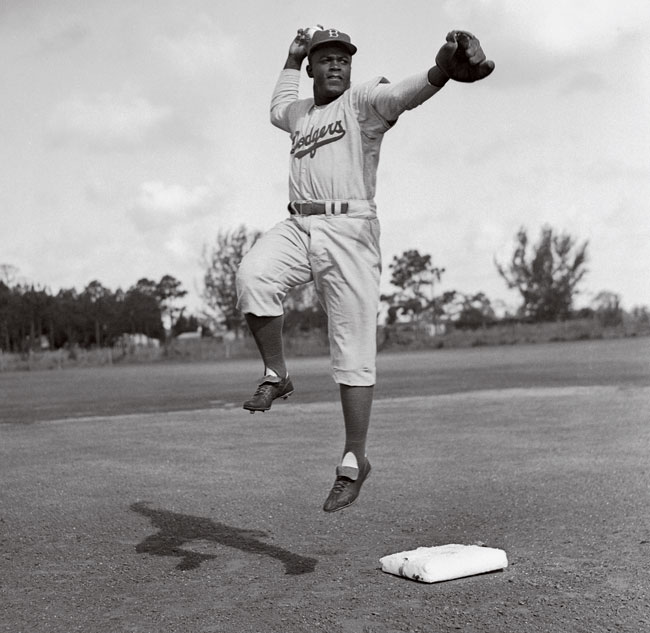Past time
Not Just a Game
Sports in America reflect some of our greatest national values—and our greatest shortcomings. By sociology assistant professor Krystal Beamon

Jackie Robinson's impact on sports, race, and America can still be felt 67 years later.
Every year on April 15, all Major League Baseball players don the number 42 in honor of Jackie Robinson Day. The Hall-of-Famer is celebrated as a champion for integration and civil rights, as he crossed the color line in 1947 to become the first African-American to play professional baseball.
That brave act had a profound impact on the way people came to view sports—and other races. Fans were now cheering for people with black and brown skin on their favorite teams. They saw African-American and white teammates working side-by-side toward a common goal and on common ground. And slowly, many began reassessing their prejudiced views.
Sports have a powerful effect on American society. As a prominent component of our culture, they showcase some of our key national values: achievement, hard work, and the determination to overcome adversity. In effect, sports are a microcosm of our society, reflecting both the great successes and ills of American life. So it should be no surprise that sports have influenced modern race relations over time.
But despite this progress, patterns of segregation remain in the sporting world. For example, while minorities are overrepresented in sports like football and basketball, they remain virtually absent from others, notably golf and tennis. And among the decision-making positions at all levels, minorities are often missing. In real numbers, this translates to African-Americans making up 19 percent of coaches and 8.7 percent of front-office administrators in football, while comprising 67 percent of the players. Twenty-nine percent of Major League Baseball players are Hispanic, but only 10 percent of managers are. And it’s even worse at NCAA Division I universities, where just 3.9 percent of athletic directors and 9.4 percent of head coaches in men’s basketball and football are African-American.
All major professional sports leagues and the NCAA are aware of the dearth of minorities in decision-making positions and have policies in place to help remedy the issue. Some progress has been made, but there remains a lack of opportunities for minority athletes to have professions related to elite athletics after they are no longer on the field.
In my new book, The Enduring Color Line in U.S. Athletics, I and my co-author examine these and other important issues related to race and sports. We discuss the use of Native American designations and imagery as mascots, the growing representation of Hispanics in baseball, and the effects of African-American men’s pursuit of often-unfruitful athletic careers.
As I recently sat at a Texas Rangers game, my son—who sports number 42 on his little league team—and his teammates of all races and socioeconomic backgrounds cheered on their favorite player, who happens to be of Hispanic decent. They excitedly chanted his name along with thousands of other fans. In that moment, no one was concerned about his ethnicity; they were simply cheering for the home team as they did 67 years ago for the great Jackie Robinson.
And it is that—the home team—that sports create for our society. A sense of “we-ness” that goes beyond race or ethnicity. It is my hope that America continues to follow the lead of athletics in this respect. As we strive toward a truly colorblind society, sports can continue to lead the way as they have historically.
PHOTOGRAPH BY HERB SCHARFMAN/CORBIS

















